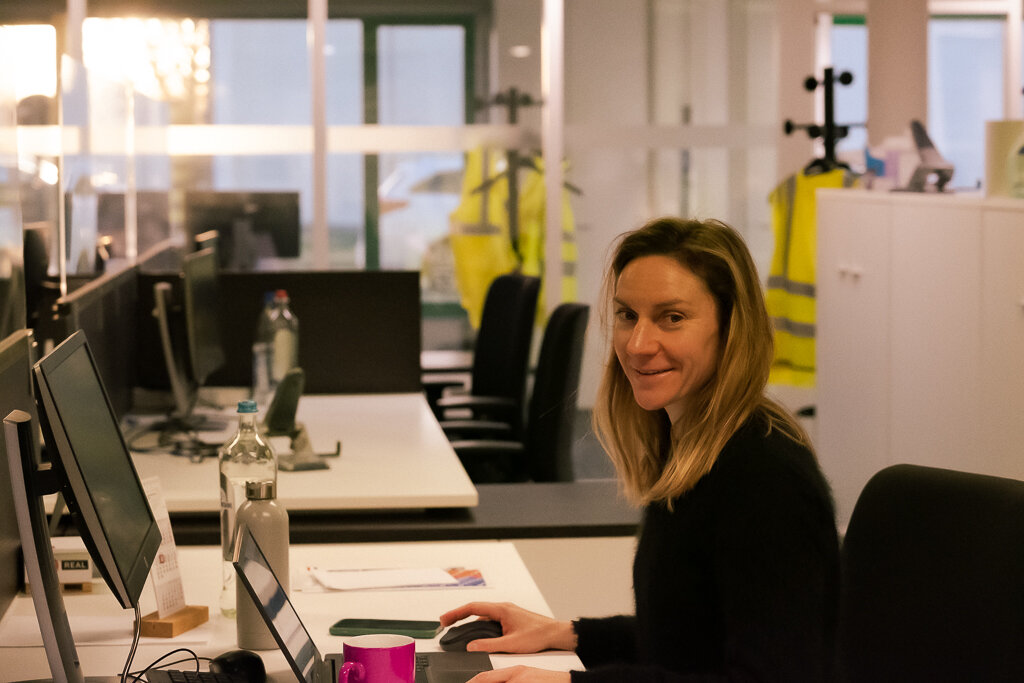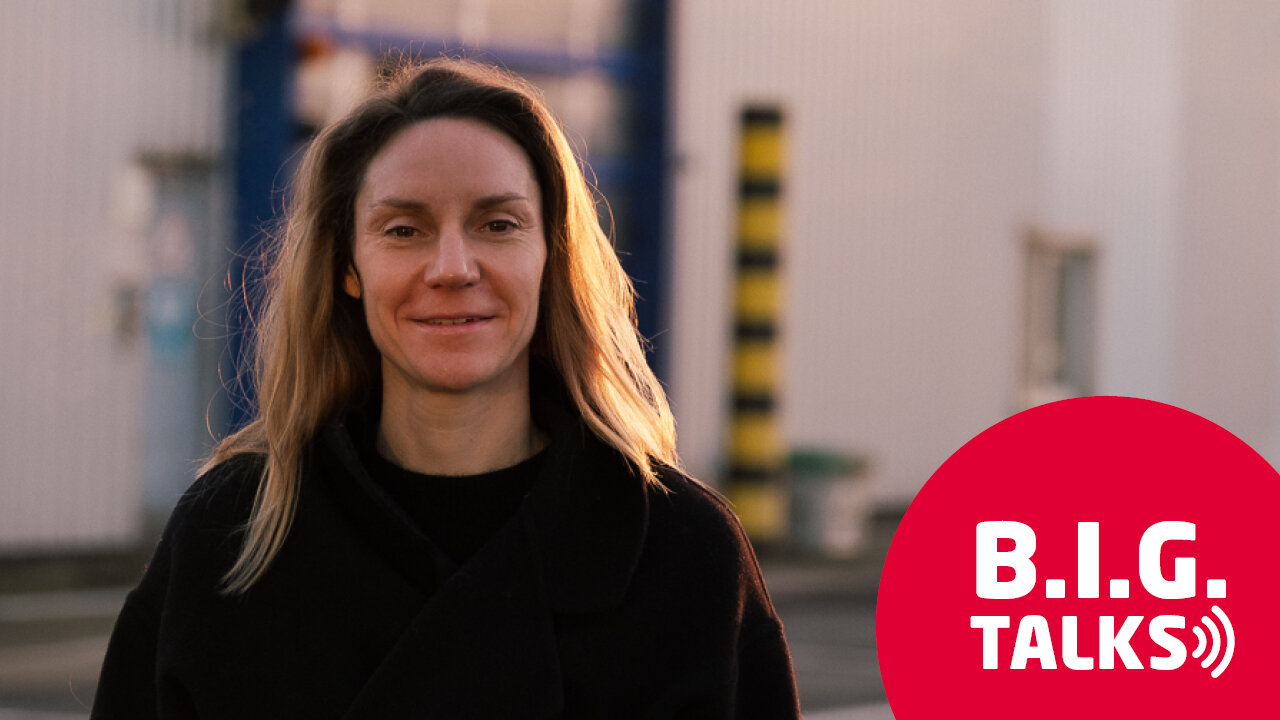In this series, we meet up with inspiring B.I.G. experts. They each have a distinct vision of what tomorrow's (business) world should look like. Normally, they prefer to stay behind the scenes. But for B.I.G. Talks, it’s all cards on the table. Next in line: Sofie Paelinck, innovation project manager about future servitization in a manufacturing-oriented business.
“A couple of months ago, I came up with the term servitization to describe my new role within B.I.G., but actually, it's no longer the correct term,” says Sofie Paelinck. "More correct is using the term Business Model Innovation, where we innovate in terms of the way we do business. Fundamentally it is quite simple, instead of depending only on selling a product, companies can make products or services available to the customer, where the customer does not become the owner of that product, but also does not bear the burden associated with it. The seller, in turn, retains ownership of the product, allowing them to reuse or recycle the product when it returns from the customer.”
Win-Win
The term servitization is popping up more and more. It seems to be the way to go for many companies?
Sofie Paelinck: "In a traditional business model, as a user you buy something from the seller and, in addition to the product itself, you also get responsibility for that product. That model is under pressure worldwide. The telecommunications industry is a good example of how that one-to-one selling has changed. Very often you see providers offering a phone subscription that includes a mobile device on loan. This relieves the user because on the one hand, he does not have to buy his own device and on the other hand, in case of a breakdown, he is helped more easily. But it also generates recurring revenue for the provider because the customer pays for it on a fixed term.
How do people feel about this innovative approach?
Sofie Paelinck: "The minds are becoming more progressive. Especially since it is increasingly woven into our lives. A lot of companies are based on such a recurring revenue model. Just to name Netflix and Spotify as giants. They have wiped out the entire one-to-one sale of CDs and DVDs based on that rental model. As those examples become intertwined with everyone's lives, the mindset of many people in that regard is changing, and companies that are production-minded are increasingly rolling out these types of concepts as well. The idea is to create a win-win situation with the client. Developing from the customer's point of view and offering a good service in addition, in return for proper compensation and ownership of the product."
Design for recycling
It seems that this model also indirectly reduces waste?
Sofie Paelinck: "Not even indirectly, this is a clear opportunity to work more sustainably! In a traditional way of working, the producer buys raw materials, processes them into a product, sells it to the end user and then the product ends up on the waste mountain. If we start looking at the servitization concept, as a producer we retain ownership of the material and thus the responsibility to recycle the product end-of-life."
Talk us through that renewed process.
Sofie Paelinck: "In the initial design phase, the producer starts thinking about how to reuse or recycle the product end-of-life, because dumping the product is pure cost. That's the way to go: you have to design for recycling.

Tilt it from one business model to another
Is it important for B.I.G. to step into this story?
Sofie Paelinck: "We want to evolve from a production company to one that focuses on added value solutions. We need to start finding a recurring revenue model for our solutions, to get out of the price war and move away from the cost-plus. Our recyclable event carpet Rewind is the best example of this. Besides offering the carpet, we also offer a recycling service. For B.I.G. the carpet still yields end-of-life, and the customer doesn't have to care about the handling.”
The different operating modes must change the production process.
Sofie Paelinck: "This does change the way we produce in a few areas. Because of customer orientation, diversification would be much more targeted. Of course, we cannot change our way of working overnight. To be clear, we still very much need what we are doing. But in addition, we need to build that alternative business model and then gradually tilt it from one to the other."
Conclusion: we are on the right track.
Sofie Paelinck: "Indeed, we are heading in the right direction. By offering solutions in that new model, we do feel what the market needs, and so we can explore in which we can help and unburden our clients.”
